Dog Strangling Vine
- Milkweed family (Asclepiadaceae family):
- Vincetoxicum rossicum (Kleopow) Barbar.
- EPPO code:
- VNCRO
- Other names:
- Swallow-wort
Species information
- Lifecycle:
- Perennial.
- Propagation:
- Reproduces by seed and by sprouting from short rhizome if plant is damaged.
- Emergence:
- Dog strangling vine’s shoots will emerge from May to June from underground root buds. The seeds generally need a season after dispersal before they germinate at a higher frequency, but they certainly can germinate once dispersed provided the soil temperature is warm enough. Seed has been observed to germinate after multiple years in storage.
- Habitat:
- Dog strangling vine grows predominately in central Ontario in woodlots, ravines, and waste areas, as well as along hillsides and fence lines. More recently, however, it has also been found in southern and eastern Ontario.
- Competitiveness:
- Dog strangling vine is an aggressively growing plant that will out-compete many other species. Once established, it is very difficult to control.
- Risk of Livestock Poisoning:
- Livestock generally avoid consuming this species on pastureland, unless there is little other vegetation available. A review of livestock poisoning literature by DiTommaso et al. (2005), concluded that “sufficient amounts of toxin(s) are present to consider the plant dangerous for grazing livestock and wildlife, especially if other better quality forage is limited.”
Identification clues
Seedling
- Cotyledons:
- Oblong, with a pointed to rounded apex, about 5–7 mm long.
- Young leaves:
- Dog strangling vine’s first leaves are opposite, oval to oblong and dark green with a pointed tip. They are also hairless and have entire margins.
- Mature leaves:
- Appear similar to younger leaves in terms of shape, but are usually larger.
Mature plant
- Stems:
- Just as its name implies, dog strangling vine’s stem is vine-like, twining and either herbaceous or with a woody base.
- Flowers:
- Its flowers are maroon to pinkish with five petals, which gives it a star-shaped appearance. It has a lobed and darker maroon corona. Dog strangling vine will flower from June to September. Flowers turn to slender seed pods.
- Seeds:
- Dog strangling vine’s seeds are flat, brown, egg-shaped and attached to long white silky “fluff” that aids in wind dispersal.
- Roots:
- Crown root with short underground spreading rhizomes.
Often mistaken for
I know it's not Black dog-strangling vine because it is near impossible to tell the difference between the two species during vegetative growth, but at flowering black dog-strangling vine has dark purple to black flowers with pubescence on the inner surface while dog-strangling vine has hairless, maroon to light pink petals. Dog strangling vine is more common in Ontario.
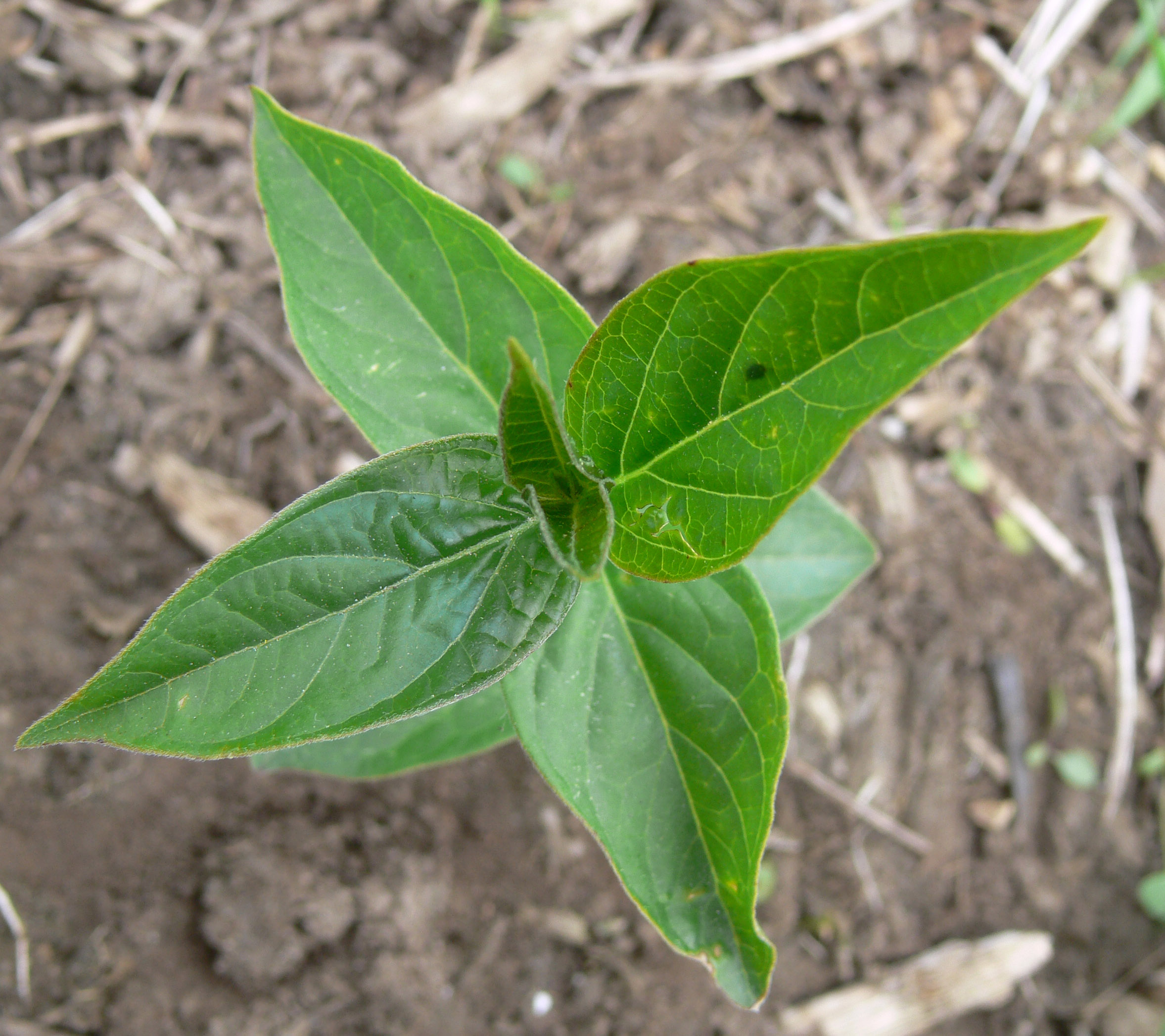
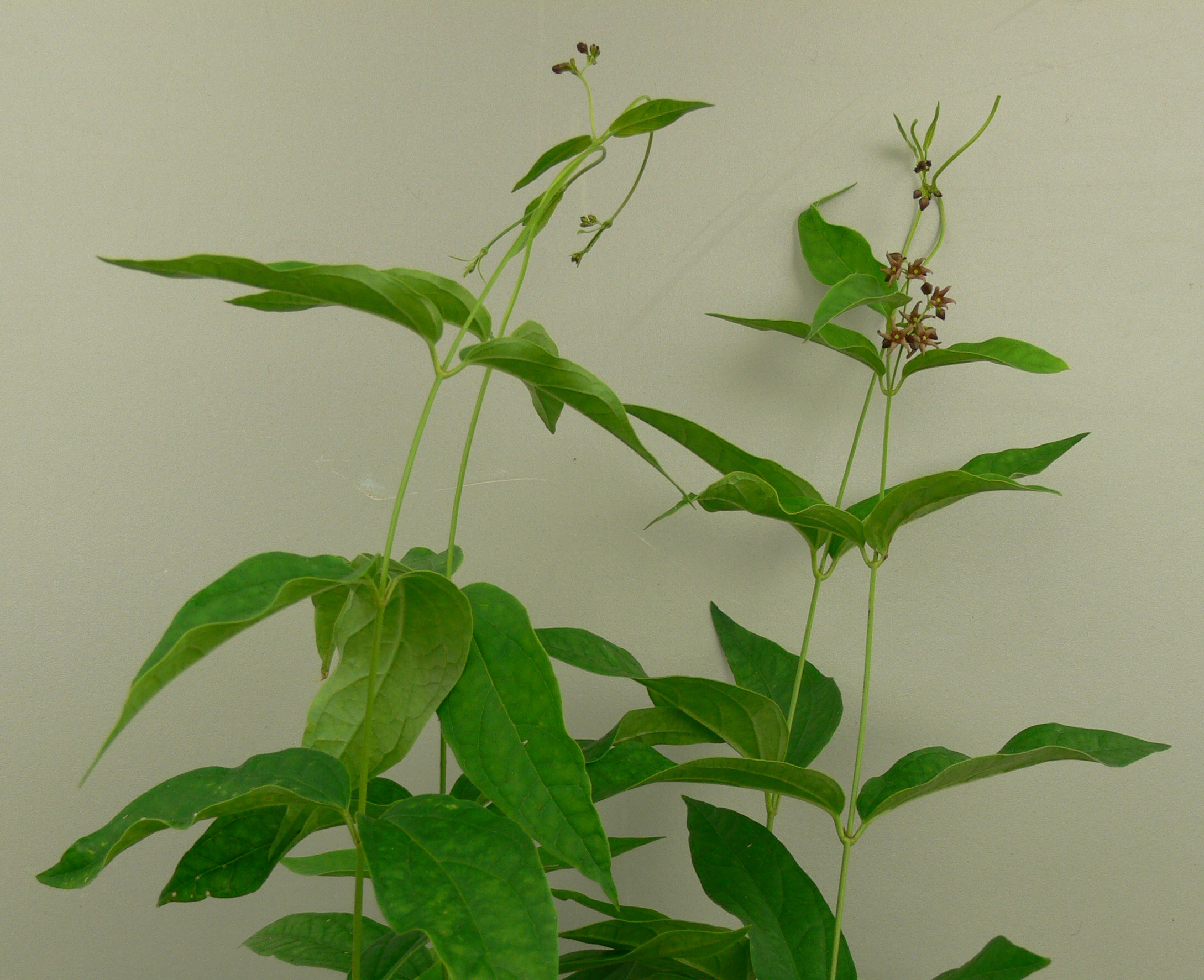
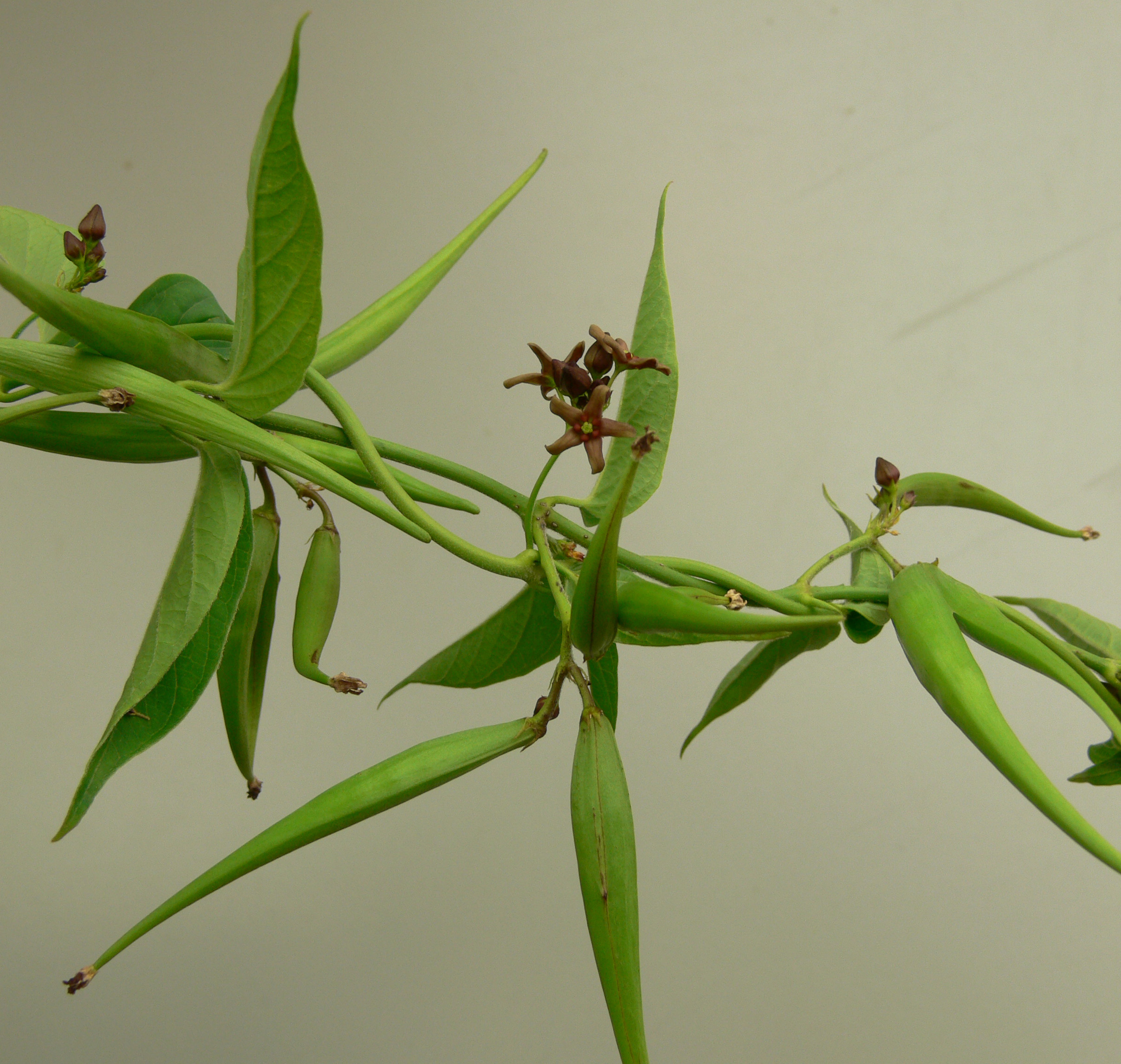
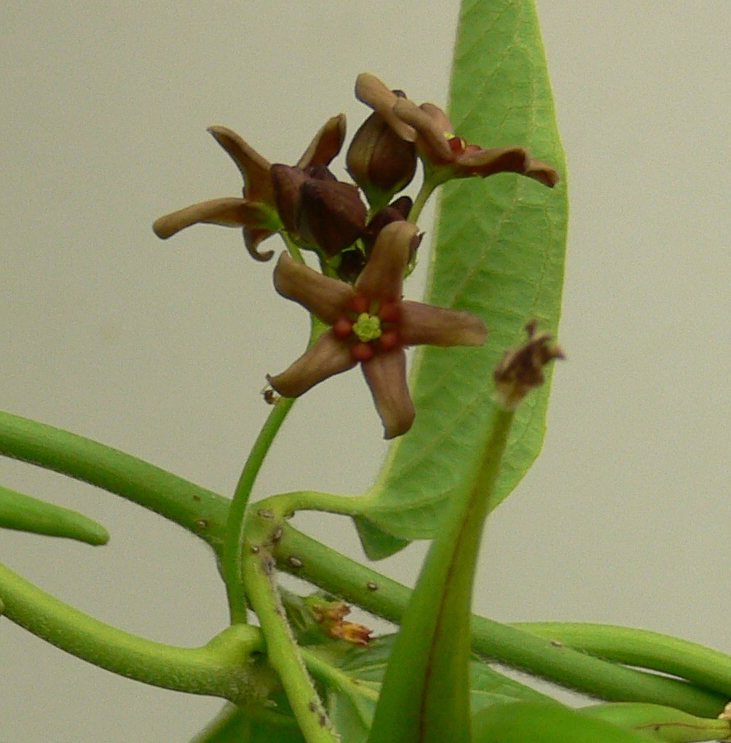
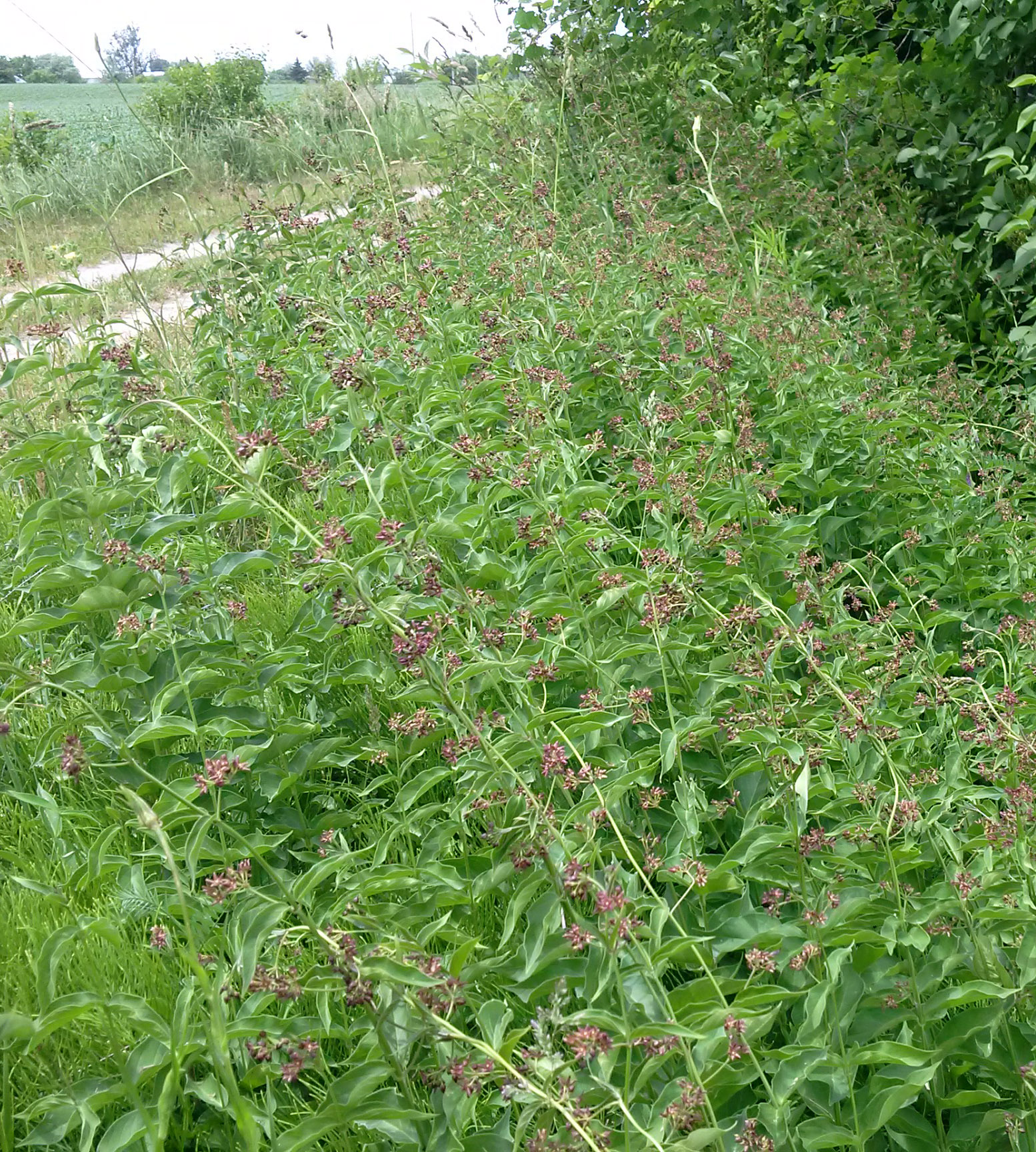
Updated: January 13, 2023
Published: January 13, 2023